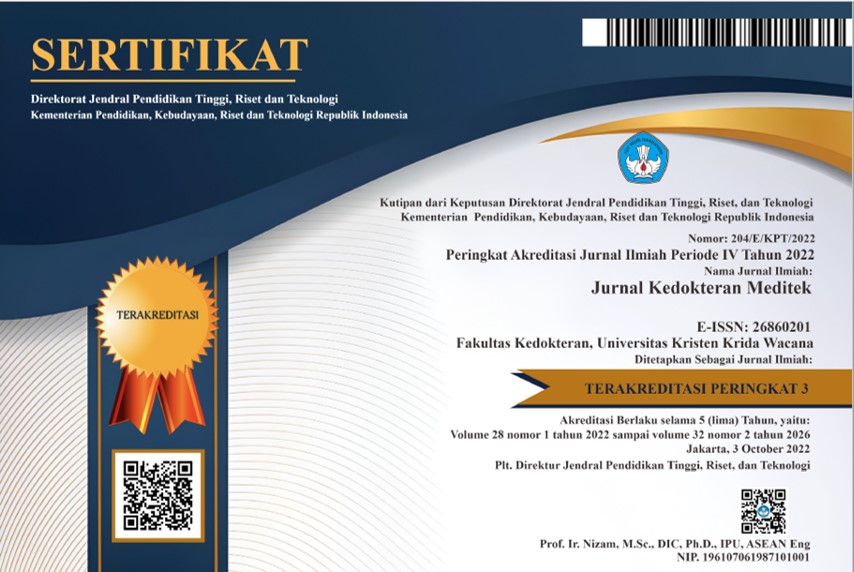Insufisiensi Vena Kronik Patofisiologi dan Jenis Gangguan yang Sering Terjadi
DOI:
https://doi.org/10.36452/jkdoktmeditek.v13i33.151Abstract
Chronic venous insufficiency is a disease taht has quite serious social and economic consequences, especially in productive population. In europe about 40% adult poulation suffer from venous disturbances. Whereas in United Kingdom about £600-800 milion has been spent to afford the treatment of chronic venous insufficiency, it means about 2% of the total health program expenses. The prevalences of venous disturbances is 10-15% varicose veins, 5-15% chronic venous incuffciency, and 1% leg ulcers. The prevalency is higher with increasing age but remain relatively constant in adult age. Chronic venous insufficiency vary from symptomatic valve incompetencies, varicose veins, up to skin efflorecencies and leg ulcers as the most serious complication. In USA varicose vein is the seventh major cause if medical problem. The main function of the vein is to bring the blood back to the heart. besides, the vein, as the blood reservoir, can adjust the vascular complilance and contains about 64% of the total blood volume. Many factors affect venous return, such as: venous capacity, pressure gradient, sympathetic activity, skeletal muscle contraction, vein valve, respiration, and pumping action of the heart. This article describe the role of those factors and some of venous insufficiency most found in the clinic: acute venous thrombosis, thrombophlebitis, valve incompetency, primary varicose vein, chronic venous thrombosis and postphlebitis syndrome.
Key words : venous return, pumping action venous insufficiency, thrombophiebitis, valve incompetency

















